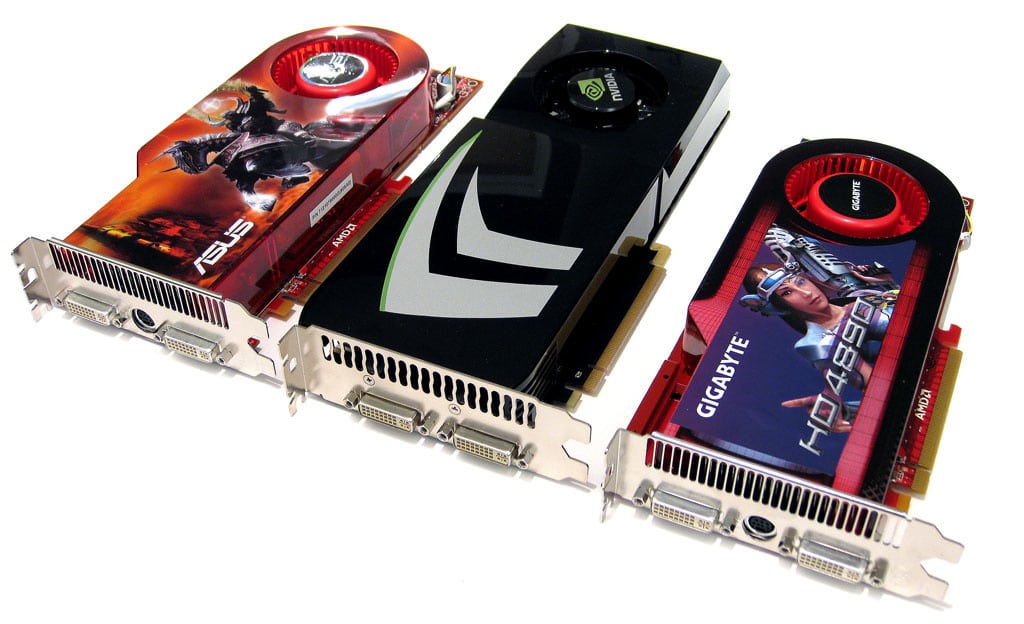Exactly ten years ago, the graphics card market was extremely even. Although Nvidia led the performance league with its Geforce GTX 200 series with the GTX 285 at the forefront, AMD was not far behind with the Radeon HD 4000 family, which was both more energy efficient and cheaper to manufacture.
It is no secret that top performance is important, as consumers are happy to buy something from the same top player. AMD, which at the time had a pronounced strategy with small and affordable graphics circuits, therefore looked at what they could do to better meet Nvidia at the top.
The answer was to reuse the RV770 graphics circuit, which was the basis for the Radeon HD 4870 and HD 4850, and was manufactured on TSMC’s 55-nanometer technology. Without touching its 800 stream processors, the 256-bit memory bus and the like, they optimized the design to reach higher clock frequencies.
The result was the RV790 and the graphics card ATI Radeon HD 4890. On paper, it looked like an overclocked HD 4870, but the optimizations made it possible to reach about 100 MHz higher in clock frequency. Where the Radeon HD 4870 had a standard frequency of 750 MHz, the HD 4890 stepped up to 850 MHz – an increase of 13.3 percent.
The clock frequency for GDDR5 also took a step up by just over 8 percent, from an effective frequency of 3,600 MHz to 3,900 MHz. Together with the unchanged memory bus of 256 bits, it gave a bandwidth of 124.8 GB / s compared to the previous 115.2 GB / s. The TDP value of the graphics card also increased from 150 to 190 W.
The new graphics card was wedged between the Geforce GTX 285 and GTX 260 (216), which differed somewhat in both price and performance. The response from Nvidia came unusually fast, even so fast that they had time to send out a graphics card to reviewers and lift the privacy on the same day as the Radeon HD 4890 was launched.
The newcomer was named Geforce GTX 275 and the graphics circuit was GT200B, the same as in GTX 285 but in a slightly scaled-down design with a memory bus of 448 bits instead of 512 bits. Together with 896 MB GDDR3 in an efficient clock frequency of 2,268 MHz, the card got a bandwidth of 127 GB / s. In addition, the 240 CUDA cores of the graphics circuit had a frequency of 633 MHz and a separate one shaderfrequency of 1,404 MHz.
Many were surprised at how quickly Nvidia responded to AMD. What they did was take the same configuration of the graphics circuit that sat in the Geforce GTX 295 with dual circuits, screw up the clock frequencies and launch it as the GTX 275. In other words, a half GTX 295 that was overclocked.
“Nvidia’s attempt to crash AMD’s launch of the Radeon HD 4890 has been partially successful. The Geforce GTX 275 has a good price – performance ratio and is faster than the competition. With a bit of overclocking, the newcomer also runs past the much more expensive GTX 285.
The big hostage is that the graphics card does not exist today, at least not on store shelves. A paper launch means that it can take several weeks before ordinary consumers have the opportunity to come across a copy. On the other side of the fence, AMD attracts with already well-stocked stocks. However, the Geforce GTX 275 is a treat to look forward to. “- Jonas in SweClocker’s test of the Radeon HD 4890 and Geforce GTX 275.
On the launch day on April 2, there was an even battle between the duo, where the Geforce GTX 275 can generally be considered to have had a slight advantage. It also drew more power and had a comparatively huge, and expensive, graphics circuit of 470 mm². For the ATI Radeon HD 4890, the circuit area was only 282 mm², which was about 10 percent larger than the 256 mm² for the RV770 in the HD 4870.
Regarding store availability, the Radeon HD 4890 became available on the day, while it would be a number of weeks before Nvidia’s rushed GTX 275 appeared. They both had a recommended price of 250 USD, in Sweden at that time about 2,900 kronor including VAT, which was 50 USD over Radeon HD 4870 and Geforce GTX 260 (216).
The story of the Radeon HD 4890 took a new turn when it began to compete with the much more expensive graphics card Geforce GTX 285. The optimizations made in the RV790 made it overclock better than the RV770, something that AMD began to encourage its partner manufacturers to stick to.
► SweClocker’s test of Radeon HD 4890 and Geforce GTX 275 (2009-04-02)
Soon, the factory-overclocked Radeon HD 4890 came with bespoke cooling solutions that blew up 1 GHz barriers (1,000 MHz). This meant that the graphics card could be compared to Nvidia’s flagship at a lower price. The result of this and even lower down in the performance segment was a price war, where consumers could get an enormous amount of performance for the money from both teams red and green.
Do you also have good memories from the graphic year 2009? Do you remember when the Radeon HD 4850 was reduced in price to an insanely low 99 USD? Was the graphics card market better and more fun before? Share your memories in the comments section!















